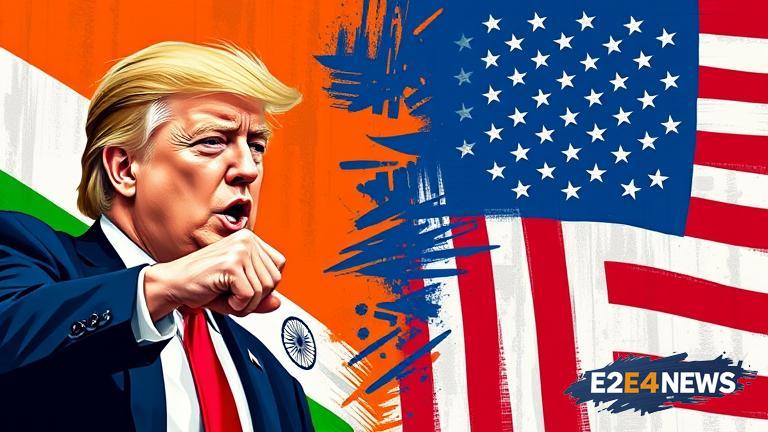The United States and India are engaged in a heated trade dispute, with President Donald Trump warning of a significant increase in tariffs on Indian goods. The move comes in response to India’s decision to impose higher import duties on certain US products, including agricultural goods and chemicals. The trade tensions between the two nations have been escalating over the past year, with both countries imposing tariffs on each other’s goods. The US has been pressuring India to reduce its trade deficit and open up its markets to American products. However, India has been resistant to these demands, citing concerns about the impact on its domestic industries. The latest development in the trade dispute is the US threat to raise tariffs on Indian goods, including textiles, pharmaceuticals, and chemicals. The tariffs could have a significant impact on Indian exporters, who rely heavily on the US market. The Indian government has responded to the US threat by saying that it will take all necessary measures to protect its industries and workers. The trade dispute between the US and India is not limited to tariffs, with both countries also engaged in a dispute over market access and investment. The US has been critical of India’s investment climate, citing concerns about corruption, bureaucracy, and regulatory hurdles. India, on the other hand, has been seeking greater access to the US market for its products, including IT services and pharmaceuticals. The trade tensions between the US and India have significant implications for the global economy, with both countries playing important roles in international trade. The dispute also has implications for other countries, including China, which has been watching the developments with interest. The US-China trade war has already had a significant impact on global trade, and the US-India trade dispute could further exacerbate the situation. The Indian government has been seeking to diversify its trade relationships, including with countries such as the EU and Japan. However, the US remains one of India’s largest trading partners, and the trade dispute has significant implications for Indian businesses. The US has also been critical of India’s decision to purchase oil from Russia, citing concerns about the impact on the global energy market. The US has been seeking to reduce its dependence on foreign oil, and has been critical of countries that continue to purchase oil from Russia. The Indian government has responded to the US criticism by saying that it will continue to purchase oil from Russia, citing concerns about energy security. The trade dispute between the US and India is likely to continue, with both countries seeking to protect their interests. The dispute has significant implications for the global economy, and could have far-reaching consequences for international trade. The US and India must work together to resolve the trade dispute, including through negotiations and dialogue. The two countries have a long history of cooperation, and it is in their mutual interest to resolve the trade dispute. The trade dispute is not just about tariffs, but also about market access, investment, and energy security. The US and India must work together to address these issues, including through the establishment of a free trade agreement. A free trade agreement between the US and India could have significant benefits for both countries, including increased trade and investment. However, the agreement must be negotiated in a way that takes into account the concerns of both countries, including issues related to tariffs, market access, and energy security.





